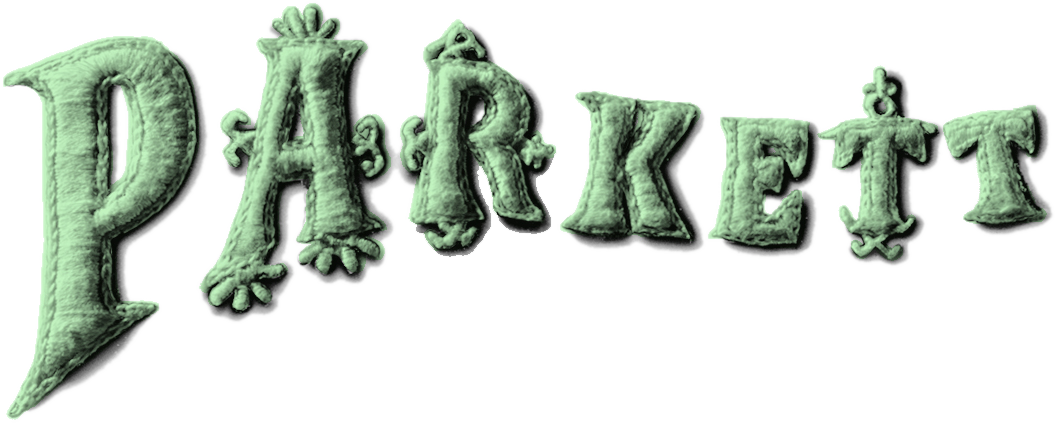Parkett Vol. 73 - 2005 | Ellen Gallagher, Paul McCarthy, Anri Sala
Ellen Gallagher
Read a selected text (PDF)
View edition
Paul McCarthy
Read a selected text (PDF)
View edition ("Billy Club")
View edition ("Peter Paul Skin Sample")
Anri Sala
Read a selected text (PDF)
View edition
Insert: Matthew Brannon (PDF)
Spine: Carsten Nicolai
Miscellaneous:
Anri Sala text in Chinese (PDF)
Tania Bruguera by Roselee Goldberg (PDF)
Steven Parrino by Fabrice Stroun (PDF)
U.S. & Canada
Please place your order through our distributor D.A.P. here.
Browse Selected Texts and more on the Collaboration Artists
Artist Insert
Editorial
The tension generated by the “old newspaper” on the cover derives from several contrasting associations. Someone may have thoughtfully made a personal cover for Parkett: a newspaper that proverbially lasts but a single day protectively wrapped around an art publication to preserve its so-called claim to eternity. Who were the readers of this daily newspaper, which is obviously older than Parkett and once targeted non-white readers? Newspapers stand for reality. Yet no matter how low-key Ellen Gallagher’s interventions may be, they counter images of relentlessly determined existence with a world that is both playful and fantastic.
Paul McCarthy’s art banks on brawn, excess, outbursts and sweeping spatial and mental dimensions, incorporating everything from the conventional image of humanity to his own ego and mythological figures. Here he has so thoroughly revamped the usual question and answer format of his interview with Jeremy Sigler that it is beyond legibility. And as in the modified newspaper, the resulting image makes new demands on readers.
The words ‘interview’ and ‘newspaper’ also loom large in the work of Anri Sala, the third Collaboration ar tist in this issue of Parkett. In 2003, Sala published a book titled Thousand Windows – The World of the Insane. It contains photos that the then 18-year-old ar tist took in 1991 of the untold newspapers that sprang up after the fall of the socialist régime as well as the improvised newsstands where they were sold on the streets of Tirana. The book takes its title from two such newspapers. In her conversation with Anri Sala, Lynne Cooke inquires about another well-known work, INTERVISTA – FINDING THE WORDS (1998), and hence the essence of Sala’s ar tistic concerns: “The strand that I’m tracing in your works has to do not only with actual silence but, more often, with not speaking or not being able to speak, or speaking via conduits or other channels.”
In his Insert, Matthew Brannon also takes what might be called a meta-look at printed matter. The ar tist as collector traces the contours of human fear in contemporary civilization in his prosaic lineup of movie posters. Their telling slogans and compact visual language speak volumes, covering territory that ranges from Schopenhauer to Freud and cogently illustrating a truism of journalism: Unhappiness is a more easily accessible experience than that of happiness. “We are threatened with suffering from three directions: from our own body, which is doomed to decay and dissolution and which cannot even do without pain and anxiety as warning signals; from the external world, which may rage against us with overwhelming and merciless forces of destruction; and finally from our relations to other men.” (Sigmund Freud)
The spine has been designed by Carsten Nicolai.
Table of Content
Where is Wickerfinn Lutz? – Jason Dodge by Angela Rosenberg
Ellen Gallagher
Oblique Brilliance by Michelle Cliff
The Racial Colorist by Ben Okri
The History Lesson – Flesh Is a Texture as Much as Color by Thyrza Nichols Goodeve
Anri Sala
Missing Presences by Mark Godfrey
From Silence to Language and Back Again by Lynne Cooke
On the Margins of History by Jan Verwoert
Paul McCarthy
A Few Words for DEAD H by Lane Relyea
A Dialogue with Language Itself by Jeremy Sigler & Paul McCarthy
Matthew Brannon, Insert
RoseLee Goldberg: Dreaming in Cuban by Tania Bruguera
Natural Pathos: Harald Szeemann (1933 – 2005) by Tobia Bezzola
A Post-Biennal Post-Script, Cumulus from America by Debra Singer
What to Do With Alternative/Artistic Knowledge, Cumulus from Europe by Natasa Petresin
Steven Parrino (1958 – 2005) by Fabrice Stroun





